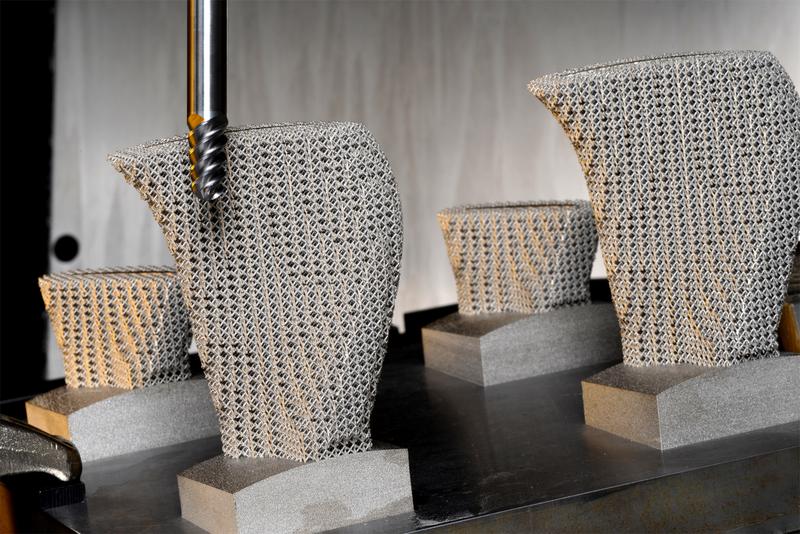
3D Printing Innovations: Support Structures for Thin-Walled Parts

Support structures for the reduction of vibrations during the post processing by milling
Source: Fraunhofer IPT
As a rule, metallic components manufactured additively in a Selective Laser Melting (SLM) process, are designed to have larger-than-usual oversize to allow for the functional surfaces to be finished in milling operations since this is the only way of ensuring that all of the surface tolerances and quality requirements can be met.
Thin-walled parts are particularly prone to vibration in the course of the machining and material removal operations resulting either in poor surface quality or even rendering the components unusable.
The Fraunhofer IPT and ILT therefore expand the design of components manufactured in additive processes, to include support structures which increase the stiffness of the susceptible areas and reduce vibrations.
These supporting elements can be removed with relatively little effort in the course of the surface finishing operation. Parts stabilized in this way can thus be manufactured in higher quality in less time and with lower level of tool wear.
The two Fraunhofer-Institutes, who will be presenting the new concept for manufacturing using additive and cutting for the first time at the Farnborough International Airshow, offer companies interested in becoming our project partners, the opportunity to collaborate in exploring new support structure geometries and in further developing them.
Vincent Gerretz
Fraunhofer Institute for Production Technology IPT
Steinbachstrasse 17
52074 Aachen
Germany
Phone +49 241 8904-273
vincent.gerretz@ipt.fraunhofer.de
www.ipt.fraunhofer.de
Anders Such
Fraunhofer Institute for Laser Technology ILT
Steinbachstrasse 15
52074 Aachen
Germany
Phone +49 241 8906-511
anders.such@ilt.fraunhofer.de












